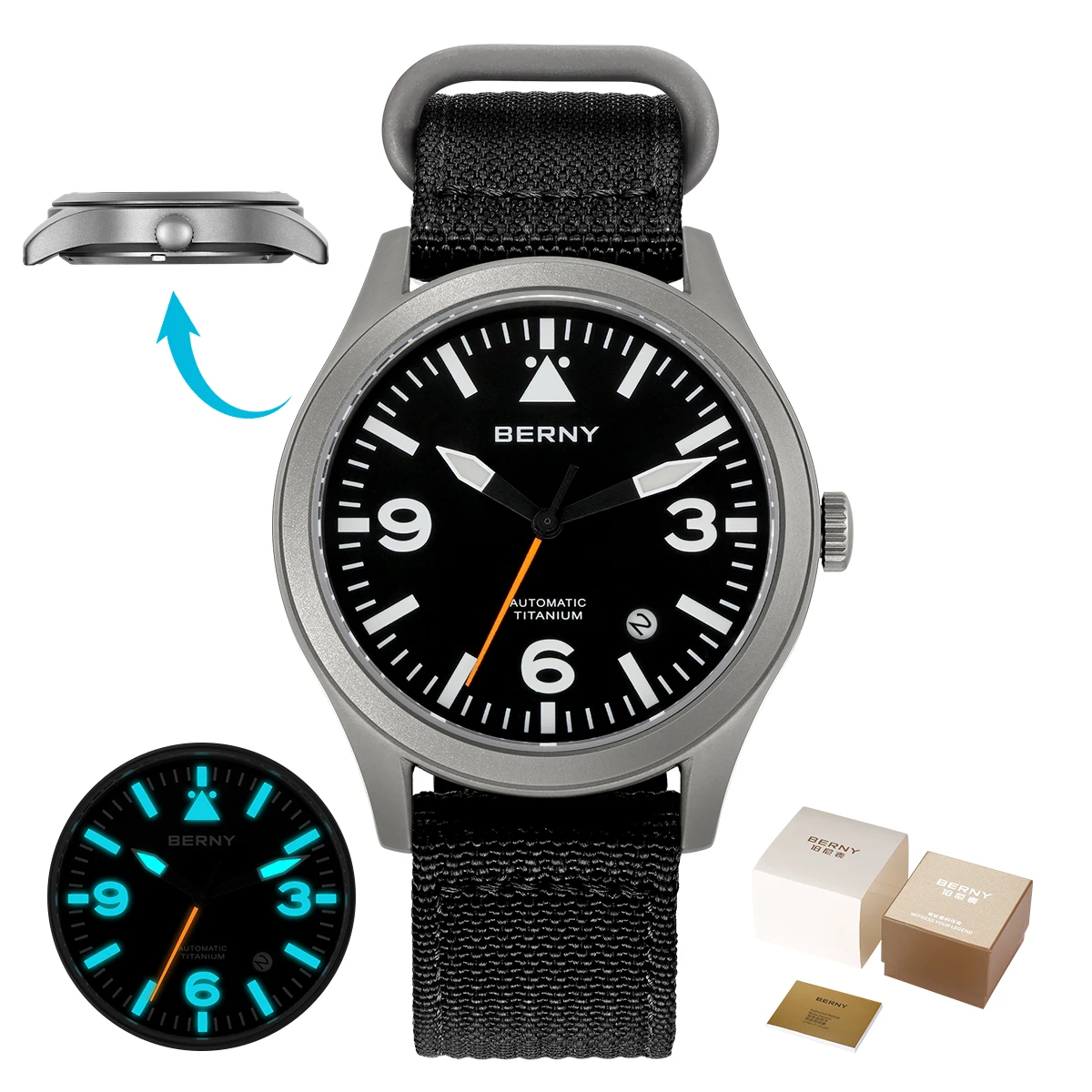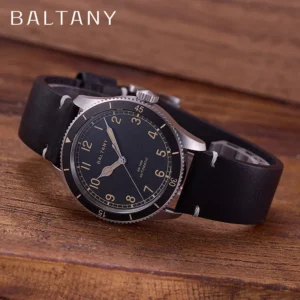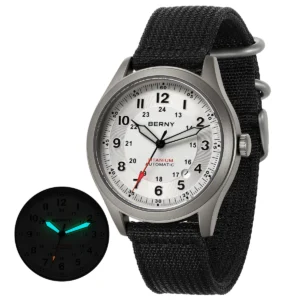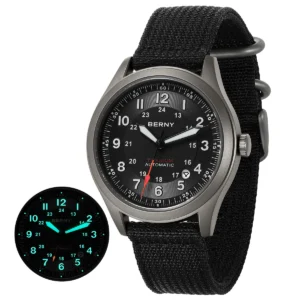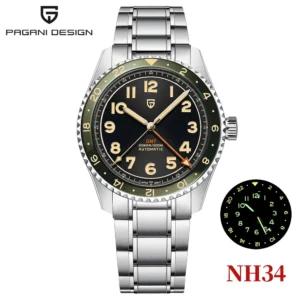Introduction: The Essential Partnership Between Pilots and Chronographs
An aviation chronograph is more than just a stylish accessory on a pilot’s wrist—it’s a specialized timepiece with integrated stopwatch functionality specifically engineered for the demanding environment of flight. The relationship between pilots and their chronographs represents one of the most critical partnerships in aviation, where precise timing directly impacts safety margins and operational success.
Despite the proliferation of digital instrumentation in modern cockpits, chronographs continue to serve as vital tools for pilots worldwide. They function as both practical timing instruments and tangible connections to aviation’s rich heritage of mechanical precision. For pilots, these specialized timepieces aren’t merely backups but active components in their safety toolkit.
Aviation Chronograph: A specialized timepiece featuring stopwatch functions specifically designed to assist pilots with timing-critical flight operations including navigation, fuel management, and emergency procedures.
The fundamental nature of aviation relies on precise timing—whether calculating position over vast distances, managing fuel consumption, or executing time-sensitive emergency procedures. Studies suggest approximately 70% of professional pilots still incorporate chronograph watches into their flight operations, recognizing their unique advantages in scenarios where split-second decisions matter. The enduring relationship between specialized timepieces and their engineering history continues to influence modern aviation practices, creating an unbroken lineage of precision timing in flight.
The Evolution of Aviation Chronographs: From Necessity to Precision Instruments
The story of aviation chronographs began in earnest during the 1910s when early pilots faced the daunting challenge of navigating without reliable instruments. These pioneering aviators quickly discovered that accurate timekeeping formed the cornerstone of successful navigation, particularly when visual landmarks disappeared.
World War I accelerated chronograph development as military aviation required increasingly sophisticated timing tools. Pilots needed watches that remained readable during violent maneuvers and functioned reliably in extreme temperature fluctuations. By the 1930s, purpose-built aviation chronographs emerged with high-contrast dials and oversized crowns designed for operation while wearing flight gloves.
World War II brought another quantum leap in chronograph innovation, with military specifications driving developments in anti-magnetic protection, shock resistance, and precise chronograph mechanisms. The post-war period (1950s-1960s) represented the golden age of mechanical pilot chronographs, establishing design conventions that remain influential today.
The experiences of early aviation pioneers deeply influenced these developments. The watches worn by aviation pioneers helped establish key design principles that would evolve into the specialized tools pilots rely on today. Historical records show that accurate chronograph timing helped prevent countless navigation errors during early transcontinental flights, where being off-course by even a few degrees could lead to disaster.
As aviation entered the jet age, chronographs adapted with additional functions like slide rule bezels for rapid calculations. While the digital revolution eventually brought advanced flight computers into cockpits, the mechanical chronograph retained its place on pilots’ wrists—transitioning from primary instrument to reliable backup system and enduring symbol of aviation precision.
The Anatomy of a Pilot’s Chronograph: Purpose-Built Features
A true aviation chronograph is distinguished by purposeful design elements that directly address the challenges of timing flight operations. Every component serves a specific function related to the demanding environment of the cockpit.
The main dial of a pilot’s chronograph prioritizes instant readability, typically featuring high-contrast combinations like white markers on black backgrounds or vice versa. This contrast ratio isn’t merely aesthetic—it’s functional, enabling quick reading in variable lighting conditions. Surrounding this central display are the subdials (totalizers) that track elapsed minutes and hours, essential for longer flight segments and fuel calculations.
Chronograph pushers—the buttons that start, stop and reset the timing function—feature distinctive engineering in aviation models. These pushers are typically larger (approximately 5-7mm in diameter) and feature textured surfaces that allow for reliable operation while wearing flight gloves. The substantial case diameters of 42-46mm (approximately 1.65-1.81 inches) aren’t just stylistic choices but practical necessities for at-a-glance reading in turbulent conditions.
Specialized bezels transform pilot chronographs from simple timers into computational tools. Tachymeter scales enable quick speed calculations, while logarithmic slide rule bezels—a feature on many advanced models—allow pilots to perform complex calculations like fuel consumption rates, distance conversions, and flight time estimates without additional equipment.
The case construction of aviation chronographs meets specific requirements for cockpit conditions, including:
– Pressure resistance typically between 6-10 bar (87-145 psi)
– Anti-magnetic protection to prevent interference from avionics
– Shock resistance to maintain accuracy during turbulence
These purpose-built features differentiate authentic pilot chronographs from fashion pieces merely inspired by aviation aesthetics. For pilots seeking instruments that match their professional needs, our chronograph pilot watches incorporate these technical features with precision engineering.
Navigation and Flight Planning: Chronographs as Computational Tools
Beyond basic timekeeping, aviation chronographs function as sophisticated computational tools that assist pilots with critical navigation tasks. The Time-Speed-Distance relationship forms the core of these calculations, with chronographs providing the precise time measurements needed to solve complex navigational equations in flight.
For example, a pilot can verify Estimated Time of Arrival (ETA) by timing passage between known checkpoints. By starting the chronograph precisely when passing a landmark and stopping it at the next reference point, the pilot obtains an exact elapsed time measurement. This allows for real-time ground speed calculation and course adjustments.
Consider this practical application: An aircraft traveling at 150 knots (173 mph) for 24 minutes covers 60 nautical miles (69 statute miles). If the actual elapsed time differs from the flight plan estimate, the pilot can immediately calculate their true ground speed and adjust arrival estimates accordingly—critical information for fuel planning and air traffic control coordination.
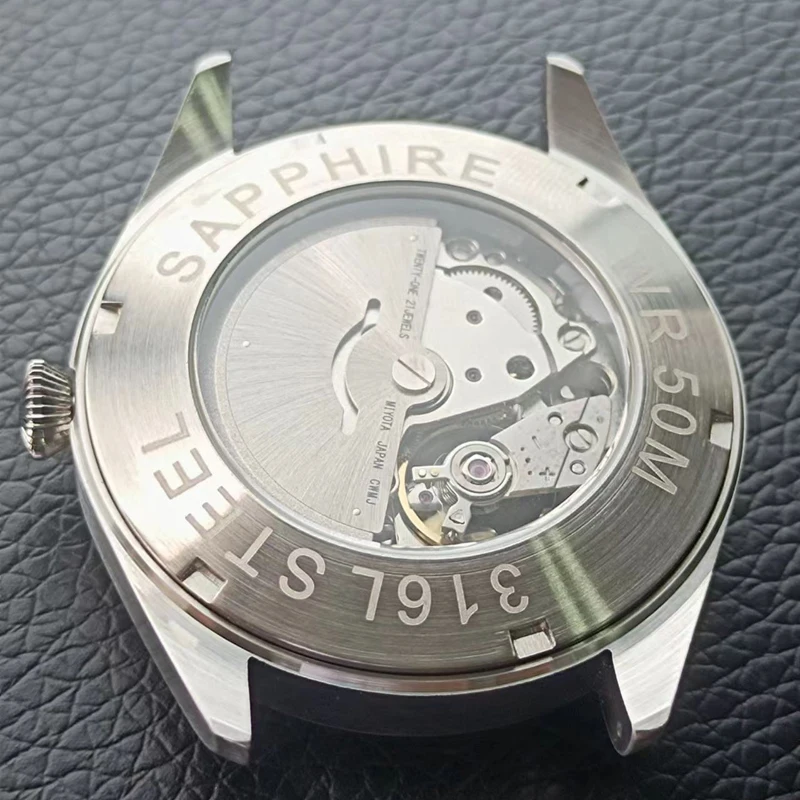
Dead reckoning—the process of calculating current position by using a previously determined position—relies heavily on precise timing. The chronograph serves as the critical tool for measuring leg times accurately, particularly when flying over featureless terrain or water where visual checkpoints are unavailable.
Slide rule bezels found on advanced automatic pilot watches expand these capabilities by enabling rapid unit conversions and calculations without reference materials:
– Converting between nautical miles, statute miles, and kilometers
– Calculating fuel consumption rates
– Determining climb and descent rates
– Converting between different temperature scales
These calculations, performed quickly on the chronograph, provide pilots with essential data for making informed decisions throughout their flight, reducing workload and enhancing situational awareness even when primary electronic systems are available.
Fuel Management and Efficiency: Timing for Optimal Consumption
Proper fuel management stands among the most critical responsibilities for any pilot, with precise timing playing a central role in this process. Aviation chronographs enable pilots to track and calculate fuel consumption rates with accuracy that directly impacts flight safety and operational efficiency.
During different flight phases, fuel burn varies significantly—from high consumption during takeoff and climb to economical cruise rates at altitude. By timing each phase precisely with their chronograph, pilots can verify actual consumption against flight plan estimates. For example, at 10 gallons (37.9 liters) per hour, a 4.5-minute climb phase consumes approximately 0.75 gallons (2.8 liters) of fuel. These granular measurements allow for real-time adjustments to ensure efficient operations.
This chronograph-based monitoring serves as an essential cross-check against digital fuel gauges, which may not always reflect actual consumption patterns. The relationship between timing precision and fuel efficiency is direct and measurable—studies show that accurate timing of power changes and flight phases can improve fuel efficiency by up to 5% on typical flights, resulting in significant operational savings over time.
In emergency situations, chronograph timing becomes even more critical. When diverting to alternate airports or managing fuel emergencies, pilots rely on precise elapsed time measurements to calculate remaining endurance with confidence. This allows for informed decision-making when every drop of fuel matters.
The practice of timing specific power settings and recording fuel burns creates valuable data over time, allowing pilots to optimize their technique for maximum efficiency. Whether flying small general aviation aircraft or commercial airliners, this chronograph-enabled precision translates directly into safer operations and reduced environmental impact.
Safety Procedures and Emergency Operations: When Seconds Count
During emergency situations, when cognitive load is highest and stress can impair judgment, aviation chronographs provide pilots with critical timing precision that can mean the difference between successful resolution and escalating danger. These mechanical timing tools shine brightest precisely when they’re needed most.
Engine failure scenarios demonstrate the vital role of chronograph timing. The standard engine windmill restart procedure allows exactly 15 seconds between attempts, with deviation potentially causing engine damage or failed restarts. By using their chronograph to time these intervals precisely, pilots ensure they’re following manufacturer procedures exactly when under immense pressure.
Emergency descent procedures similarly rely on accurate timing. When rapid descent becomes necessary due to cabin depressurization or other emergencies, pilots must maintain specific descent rates and level-off points to avoid terrain while bringing the aircraft to a safe altitude. Chronographs enable precise timing of these critical phases when digital systems may be compromised or attention must remain outside the cockpit.
Instrument approaches in degraded weather conditions involve precisely timed segments that must be followed exactly. For example, during a missed approach procedure, pilots must:
1. Apply takeoff power immediately
2. Establish a positive rate of climb (2-3 seconds)
3. Retract landing gear after positive climb is established (5-7 seconds)
4. Follow specific heading and timing instructions to the missed approach point
Aviation safety statistics show that procedural timing errors contribute to approximately 12% of approach and landing incidents. Pilots who utilize chronograph functions during aviation operations demonstrate measurably better adherence to critical timing parameters, particularly during high-stress situations.
Holding patterns—circular flight paths where aircraft maintain position while awaiting clearance—require precise timing for each leg, typically one minute in duration. By using their chronograph to maintain exact timing, pilots ensure proper spacing in congested airspace and demonstrate procedural discipline that enhances overall safety.
Mechanical vs. Digital: The Enduring Value of Traditional Chronographs
While modern glass cockpits provide integrated timing functions through digital systems, mechanical chronographs maintain distinct advantages that explain their continued presence on pilots’ wrists worldwide. This isn’t merely tradition—it’s practical redundancy with specific benefits.
The independence of mechanical chronographs from aircraft electrical systems represents their most fundamental advantage. During electrical failures or avionics malfunctions, these self-contained timing tools continue operating without interruption. This independence creates a separate timing reference immune to the cascading failures that might affect integrated digital systems.
The tactile interface of mechanical chronographs offers significant advantages during high-stress situations. The physical action of pressing chronograph pushers provides immediate confirmation of activation, whereas touchscreen or menu-based digital timers may create uncertainty about status. Studies show that under stress, pilots complete timing tasks approximately 20% faster using physical pushers compared to digital menu navigation.
Environmental conditions further highlight mechanical advantages. While digital systems typically operate within temperature ranges of -20°C to +55°C (-4°F to +131°F), quality mechanical chronographs maintain accuracy in more extreme conditions, from -40°C to +60°C (-40°F to +140°F). This extended operating range provides additional security during operations in extreme environments.
The cognitive benefits of analog displays shouldn’t be underestimated. Research indicates that the spatial representation of time on an analog chronograph face enables faster pattern recognition and elapsed time estimation compared to digital readouts. This spatial-temporal advantage becomes particularly valuable during tasks requiring continuous monitoring while managing other responsibilities.
For pilots requiring additional capabilities beyond basic timing, GMT pilot watches complement chronograph functions by tracking multiple time zones simultaneously—essential for international operations and flight planning across time boundaries. These mechanical tools represent the perfect marriage of traditional reliability with practical functionality for modern aviation.
Essential Features Modern Pilots Seek in Aviation Chronographs
Today’s professional pilots prioritize specific features in their chronographs that directly enhance operational functionality. Understanding these key attributes helps distinguish truly functional aviation timepieces from those that merely adopt the aesthetic.
Legibility stands as the paramount concern for cockpit operations. Optimal dial designs feature:
– Contrast ratios exceeding 7:1 between markers and background
– Super-LumiNova or similar luminous material with minimum 8-hour visibility
– Hand designs that prevent confusion between chronograph and time-telling functions
– Anti-reflective sapphire crystals that minimize glare in bright cockpit conditions
Durability requirements for professional use exceed those of ordinary timepieces. Aviation chronographs typically offer:
– Shock resistance of at least 5,000G (acceleration due to gravity)
– Anti-magnetic protection exceeding 4,800 A/m (amperes per meter)
– Water resistance minimum of 100m/330ft to withstand pressure changes and unexpected exposure
– Case materials selected for corrosion resistance and durability
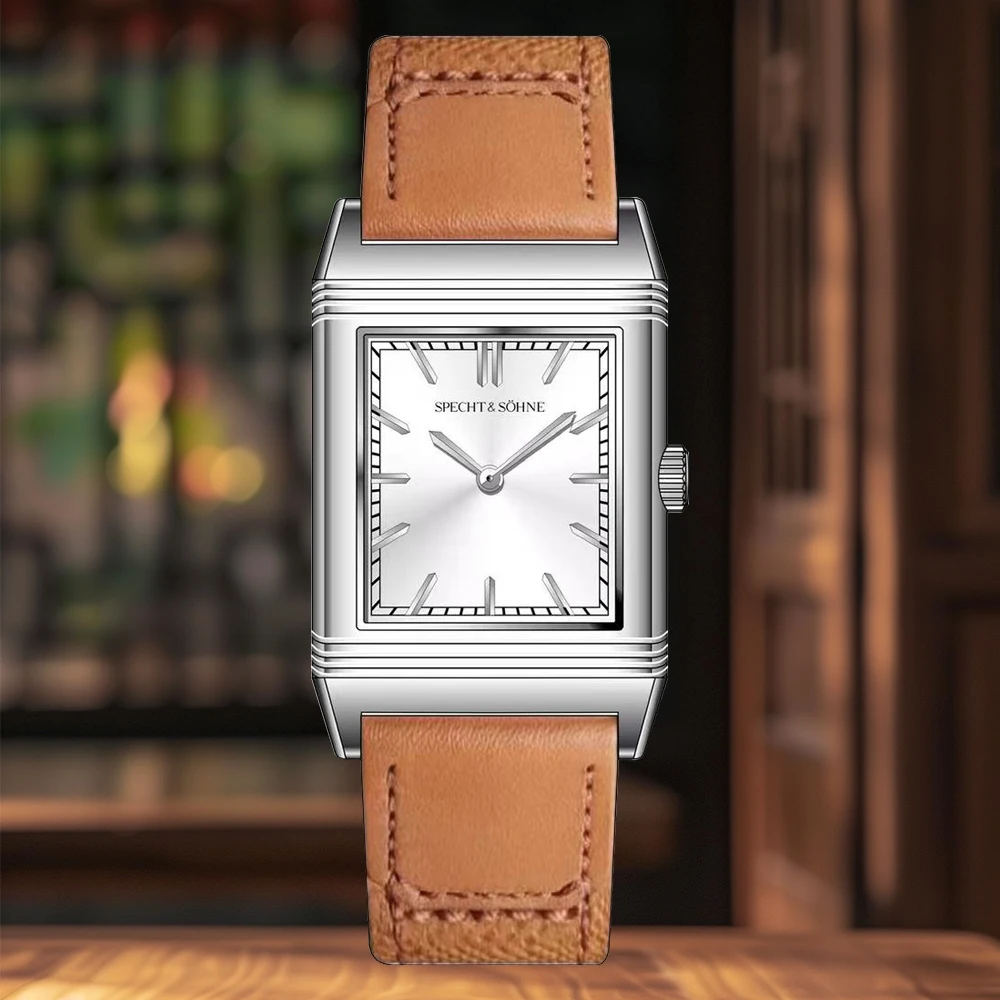
Functionality features most valued by working pilots include:
– Bi-directional rotating bezels with secure action
– Screw-down crowns to prevent accidental adjustment
– Chronograph functions that can be operated while wearing gloves
– Easy-to-read minute totalizers for flight leg timing
Automatic Chronograph Watches, Chronograph Pilot Watches
Price range: $233.36 through $237.58 Select options This product has multiple variants. The options may be chosen on the product pageClassic Automatic Dress Watches, GMT Automatic Watches, GMT Pilot Watches
Price range: $1,240.86 through $1,463.33 Select options This product has multiple variants. The options may be chosen on the product pageClassic Pilot Watches, Military Inspired Automatic Watches
$561.00 Select options This product has multiple variants. The options may be chosen on the product pageClassic Field Watches, Classic Pilot Watches, Rugged Automatic Watches, Titanium Automatic Watches
Price range: $425.24 through $496.28 Select options This product has multiple variants. The options may be chosen on the product pageClassic Field Watches, Classic Pilot Watches, Military Inspired Automatic Watches, Titanium Automatic Watches
Price range: $425.24 through $496.28 Select options This product has multiple variants. The options may be chosen on the product pageGMT Automatic Watches, GMT Dive Watches, GMT Pilot Watches
$381.14 Select options This product has multiple variants. The options may be chosen on the product page
Ergonomic considerations directly impact usability in flight conditions. Professional models prioritize:
– Balanced weight distribution on the wrist to minimize fatigue
– Secure strap designs that accommodate both over and under flight suit wear
– Pushers with positive tactile feedback even through gloves
– Crown guards that prevent accidental activation during wrist movement
Sharp Aspect’s classic pilot watches incorporate these essential features with precision engineering, ensuring that form truly follows function for professional aviators and enthusiasts alike.
Iconic Aviation Chronographs: Form Following Function
The most enduring aviation chronograph designs emerged directly from functional requirements rather than aesthetic considerations. These iconic timepieces earned their status by solving specific operational challenges faced by pilots, with their distinctive appearances being the natural result of their specialized purposes.
The development of oversized crowns and pushers—now recognizable design elements—originated from the practical need for operation while wearing thick flying gloves in unheated cockpits. Similarly, high-contrast dials with large numerals weren’t stylistic choices but responses to the challenging lighting conditions and constant vibration encountered in early aircraft.
Technical innovations that began as solutions to aviation challenges eventually became industry standards. Anti-magnetic shielding, originally developed to protect chronograph movements from the powerful magnets in early radio equipment, now features in virtually all quality timepieces. Similarly, the reinforced case constructions pioneered for aviation chronographs established new durability benchmarks throughout the watch industry.
The design philosophy of “form following function” reaches its purest expression in these timepieces. Every element serves a purpose:
– Stepped bezels for secure grip with gloves
– Prominent minute markers for precise interval timing
– Arrow-shaped hands for instant directional orientation
– Extra-strong spring bars to prevent loss during maneuvers
Understanding chronograph functions and their explanations reveals how these iconic designs implemented specific capabilities required by pilots. The most successful models achieved perfect harmony between technical requirements and visual design, creating timeless instruments that continue to influence modern timepieces.
Special Timing Applications: Beyond Basic Navigation
Beyond standard navigation and fuel management, aviation chronographs serve specialized timing needs across various aviation disciplines, each with unique requirements that highlight the versatility of these instruments.
Search and rescue operations rely heavily on precise timing for coordinated search patterns. Pilots use chronographs to maintain exact spacing between aircraft and time specific search segments, ensuring complete coverage of target areas. For example, standard search patterns require turns at precisely 2-minute intervals, with deviations potentially leaving gaps in the search grid.
Medical evacuation flights depend on chronograph timing for critical patient care coordination. Flight nurses and paramedics time medication administration and vital sign monitoring using the pilot’s chronograph as the authoritative time reference, ensuring consistency between in-flight care and receiving facility handoffs.
Test pilots employ chronographs for meticulously timing maneuver execution and system evaluations. When evaluating aircraft performance, precise measurement of acceleration times, climb rates, and control response provides essential data for certification and development. A test protocol might specify holding a specific attitude for exactly 30 seconds while measuring control forces—timing variations as small as 2-3 seconds can invalidate test results.
Aerobatic and formation flying rely on split-second precision where chronographs excel. Formation changes must be executed with perfect timing for both safety and visual impact, with pilots often counting seconds between maneuvers. Military formation procedures specify timing tolerances measured in tenths of seconds for certain maneuvers, requiring the precision only a dedicated chronograph can provide.
These specialized applications demonstrate how the fundamental principles of chronograph timing extend far beyond basic functions, adapting to the unique demands of aviation’s most challenging disciplines.
The Future of Aviation Timing: Tradition Meets Technology
The evolution of aviation timing continues as traditional chronograph functionality increasingly integrates with advanced technologies. Rather than replacing mechanical timing tools, modern developments are creating hybrid systems that preserve their advantages while adding new capabilities.
Today’s aviation chronographs increasingly incorporate high-performance materials like ceramic bezels, titanium cases, and carbon fiber components—maintaining traditional functionality while improving durability, reducing weight, and enhancing resistance to extreme conditions. These material advancements allow mechanical chronographs to better withstand the demands of modern flight operations.
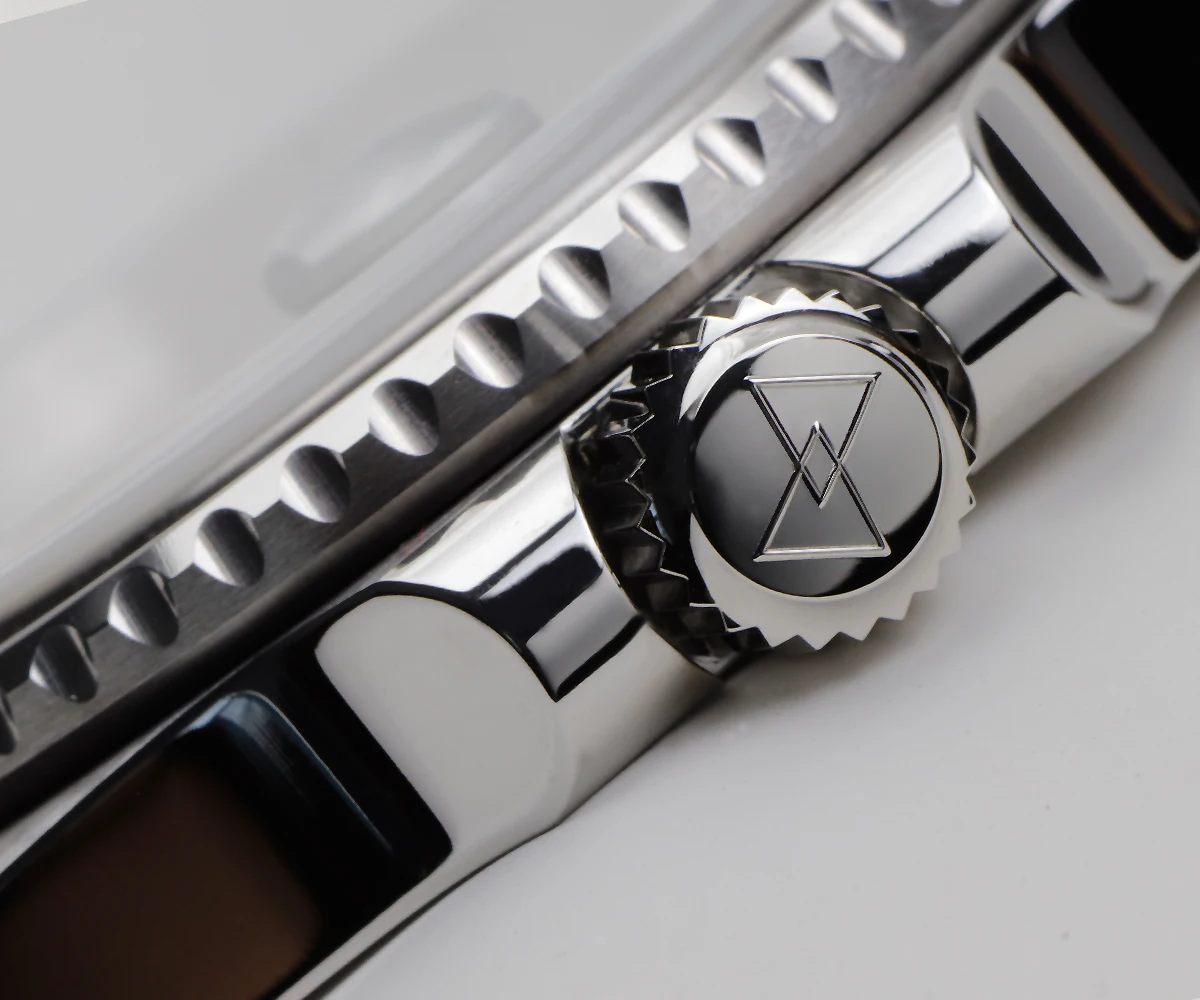
Recent industry surveys reveal interesting patterns in chronograph usage across pilot demographics. While nearly 90% of pilots over age 40 report regular use of mechanical chronographs, approximately 60% of younger pilots combine traditional timepieces with digital tools—suggesting evolution rather than replacement. The technological development seen in aviation chronographs parallels similar advancements in other specialized timepieces like the evolution of dive watch technology.
Emerging technologies are creating new synergies between traditional chronographs and digital systems. Watches with Bluetooth connectivity can transfer timing data to electronic flight bags while maintaining the independence of mechanical operations. Some manufacturers now offer hybrid chronographs with traditional analog displays driven by highly accurate quartz movements, providing the readability of traditional designs with enhanced precision.
What remains unchanged is the fundamental importance of time measurement in aviation operations. Whether displayed on an analog dial or digital screen, the ability to precisely measure elapsed time continues to underpin critical flight operations. The marriage of traditional chronograph principles with modern technology simply makes these essential tools more capable and resilient.
Why Every Pilot Should Understand Chronograph Functions
Mastery of chronograph functions represents more than just technical proficiency—it establishes a foundation of timing awareness that enhances overall piloting skills and safety consciousness. For both novice and experienced aviators, the chronograph serves as a tangible connection to fundamental principles that remain relevant regardless of technological advancement.
The safety implications of chronograph proficiency extend beyond simple time measurement. Pilots who develop the habit of precise timing tend to exhibit greater procedural discipline across all aspects of their flying. This attention to detail—cultivated through regular chronograph use—often translates into more consistent performance during critical flight phases and emergency situations.
Beyond practical application, understanding chronograph functions connects pilots with aviation’s rich heritage of mechanical precision. As Captain James Reynolds, a 20,000-hour airline veteran, observes: “The chronograph on my wrist reminds me that, beneath all our advanced technology, aviation still depends on fundamental principles of time, speed, and distance—just as it did for the pioneers.”
Perhaps most importantly, proficiency with chronograph functions builds resilience and self-reliance. The ability to perform critical calculations and timing operations independently of electronic systems provides confidence that transcends specific equipment. This self-sufficiency represents the essence of good airmanship—the capacity to fly safely and effectively regardless of circumstances.
For both aspiring and experienced pilots, the chronograph remains what it has always been: not merely a timepiece, but a tool that cultivates the precision, attention to detail, and procedural discipline that define excellence in aviation.

